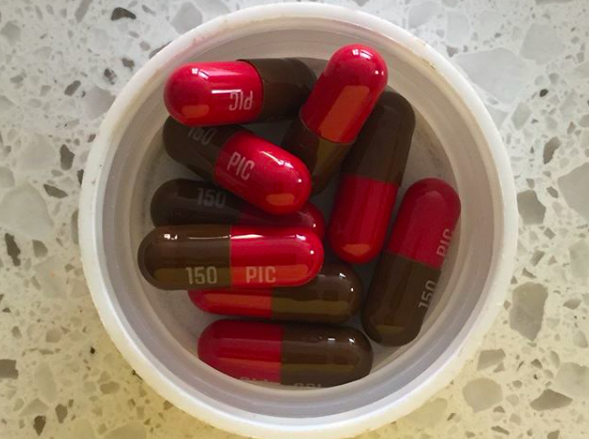Taking Iron Supplements: What's the best way anyway?
Alternate Day Iron May be Most Effective
Many hair loss patients with low serum ferritin are advised to increase their iron intake. The most common means of doing so is through oral iron supplements. The ideal way of taking supplements continues to be researched. New research supports the notion that taking iron supplements every other day (alternate days) may be a better way to get iron into the body.
The whole reason why researchers began studying how best to take iron is because iron intake triggers the body’s liver to make a protein called “hepcidin” and this hepcidin protein in turn blocks iron absorption from the gut. It seems the body has a fascinating built in mechanism to help prevent too much iron getting into the body.
New research suggests that taking iron supplements on alternate days may be equally effective if not more effective way for patients with low ferritin to address their low iron stores
A recent study set out to determine if iron absorption is better when iron supplements are given on consecutive days vs giving them on alternate days as well as to determine whether iron absorption is better when pills are given as single morning doses or better when doses are split with half in the morning and half in the evening.
In order to answer these questions, researchers performed two prospective, open-label, randomised controlled trials assessing iron absorption using special isotope labelled iron in iron-depleted (defined as serum ferritin less than 25 μg/L) women aged 18–40. In the first study, women were randomly assigned to two groups. One group was given 60 mg iron in the morning on consecutive days for 14 days, and the other group was given the same doses on alternate days for twice as long - 28 days. In the second study, women were assigned to two groups. One group was given 120 mg iron in the morning and the other was given 60 mg in the morning and 60 mg in the afternoon for three consecutive days.
For study 1, 40 women were enrolled. 21 women received daily iron and 19 received iron every other day. At the end of treatment (14 days for the consecutive-day group and 28 days for the alternate-day group), cumulative total iron absorption was 131 mg in the daily group compared to 175 mg in the every other day group. Serum hepcidin levels were greater in the consecutive-day group than the alternate-day group (p=0·0031). In study 2, 20 women were enrolled. Ten women received once-daily dosing and 10 received twice-daily divided dosing. There were no significant differences seen in total iron absorption between the two dosing regimens. However twice-daily divided doses resulted in a higher serum hepcidin concentration than once-daily dosing (p=0·013).
Conclusion and Summary
The study was interesting and supports a notion that prescribing iron on an every other day basis such as Monday, Wednesday and Friday mornings might be ideal. These strategies may limit the body’s production of hepcidin and facilitate iron absorption. These strategies may also limit the gastrointestinal side effects that can happen with iron supplements.
Reference
Stoffel NU et al. Iron absorption from oral iron supplements given on consecutive versus alternate days and as single morning doses versus twice-daily split dosing in iron-depleted women: two open-label, randomised controlled trials. Randomized controlled trial. Lancet Haematol. 2017
This article was written by Dr. Jeff Donovan, a Canadian and US board certified dermatologist specializing exclusively in hair loss.

